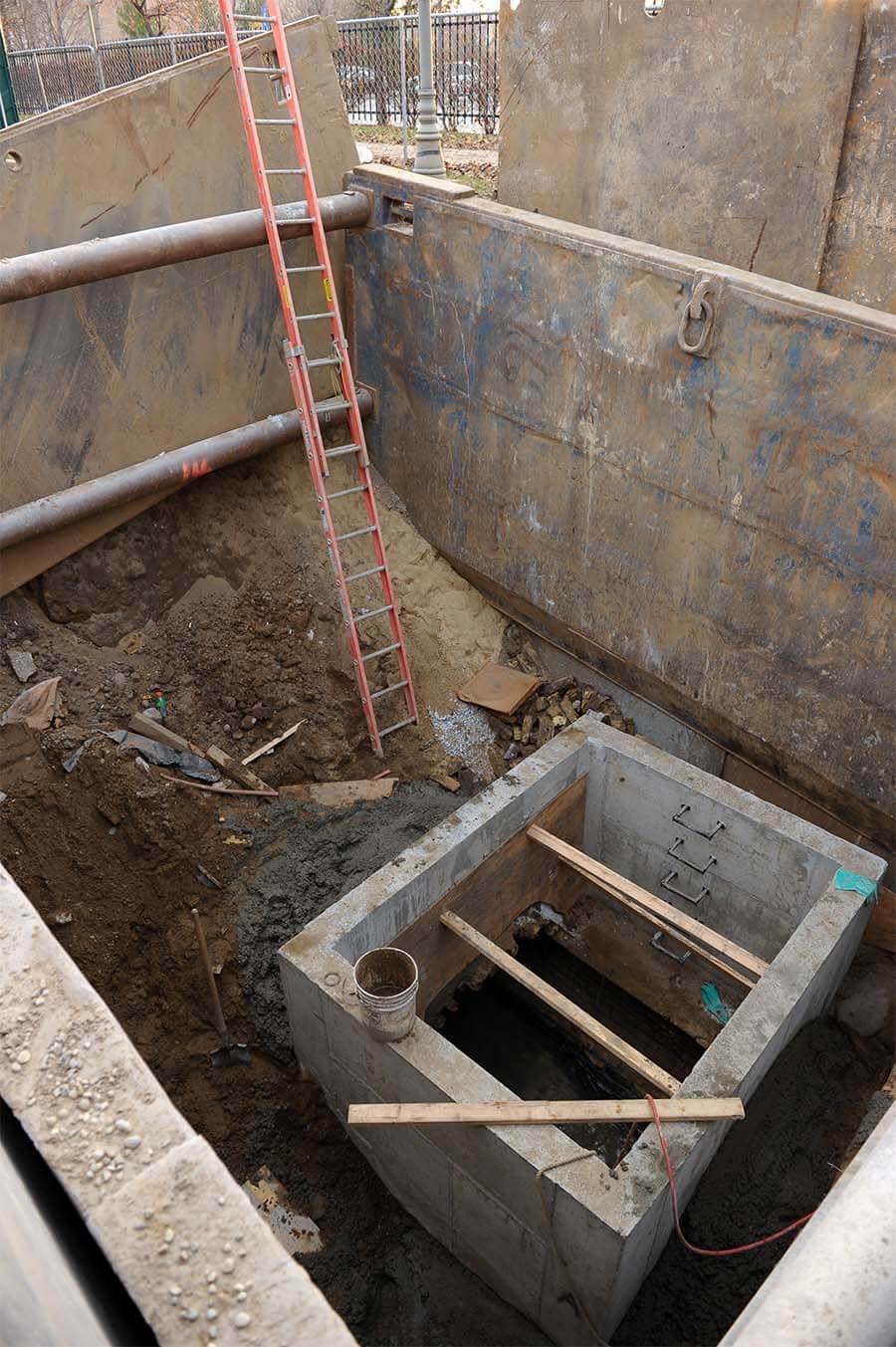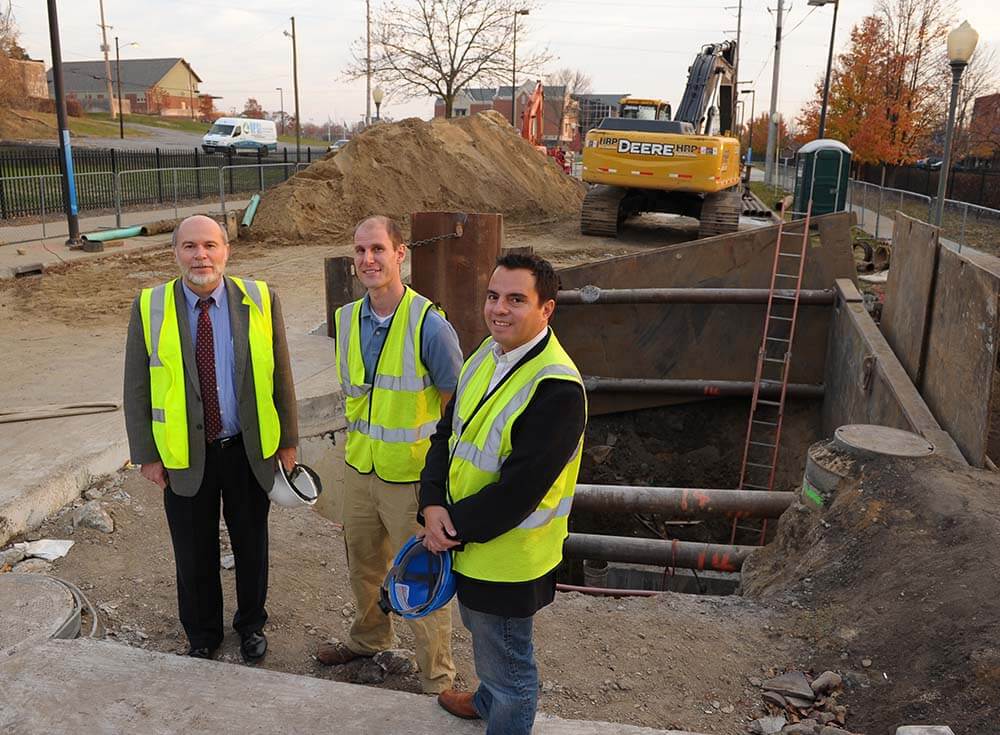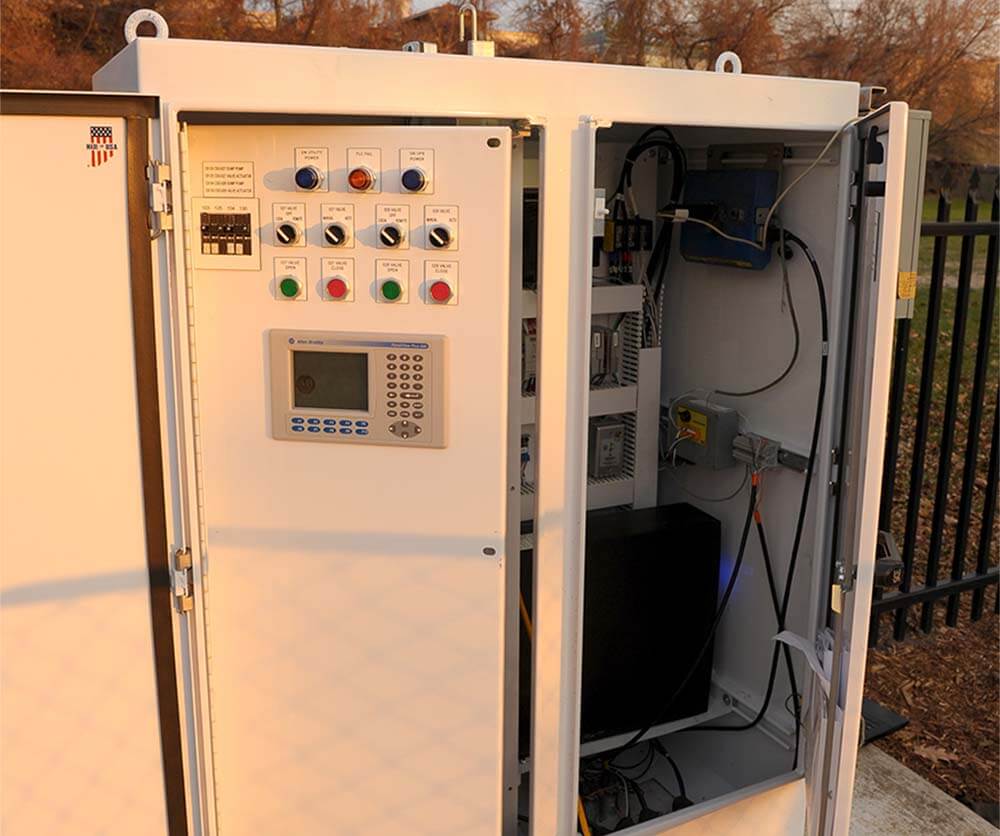
Not everyone loves the internet.
That was especially true in 2004, before the Internet of Things, in the risk-averse industry of municipal water utilities. Yet that was when Luis Montestruque, president and CTO of EmNet LLC, found himself presenting to an often-skeptical audience.
“We would go to these water conferences and stand in front of a group of civil engineers who have been practicing in the industry for 30 years,” Montestruque remembered, “and tell them we’re going to help them manage their water systems using sensors and the internet. You can imagine the reaction we got.”
Today, EmNet is a proven entity, grown out of technology developed in a Notre Dame lab and recently acquired by global water systems provider Xylem. In the process, it became an example of fruitful partnerships between universities and local governments, but also a case study in Notre Dame’s growing emphasis on taking knowledge to market.

The problem EmNet addresses is a serious one for cities. Many have combined sewer systems that mix rain runoff, wastewater and industrial waste. Normally those lines meet at a wastewater treatment plant, where the sewage is treated and then discharged into a water body. But when sewers meet capacity—like during a major rain event—many systems bypass the treatment plant and dump directly into the environment (called “combined sewer overflow”) to avoid sewage backup in residential homes. After passage of the Clean Water Act, the EPA required cities to eliminate untreated discharge into bodies of water. Cities were faced with a dilemma: continue incurring fines in the millions of dollars from the federal government, or invest in updating and expanding sewer infrastructure. Either option would be cost-prohibitive for most municipalities.
The solution EmNet provides makes sewers smarter, not bigger. EmNet (which is shorthand for “embedded networks”) works by installing a system of sensors and actuators that speak to each other. They monitor capacity of a sewer system to see if potential overflow can be averted. For example, if a rainwater line is reaching capacity, the system can identify other pipes to which runoff can be diverted; the end result is a system that doesn’t produce an overflow until it’s reached capacity across the board.



The technology was developed at Notre Dame through research conducted by electrical engineering professor Michael Lemmon. It started as a project funded by the Department of Defense to track enemy combatants in a war zone.
“That was right around 9/11,” Lemmon said, “so it was pretty defense-oriented. But there was enough in the technology that it could probably benefit some other applications. The idea behind the sensor network was that you could pervasively embed these devices in the world and keep track of what’s going on, and it seemed you could do some really great things, other than just track people.”
Soon, Lemmon started thinking of the technology in the context of environmental monitoring. He reached out to faculty members in civil engineering and before long, the concept to monitor water systems took root. The group, after securing funding from Indiana’s 21st Century program, studied the possibility of deploying the system in South Bend, Indiana. Along the way, it became apparent there was only so much the University was suited to handle.
“I realized that there was an issue with regard to maintaining or interacting with the city as a customer,” Lemmon said. “And that’s when I decided that it would be good to have a small business or private business entity that was separate from the University, but would serve as a conduit for tech transfer and would be more responsive to the needs of the city than the University would be.
“…an entrepreneurial career here in South Bend, with the financial support from the state, with my professors, was very attractive.”
“For example, the EmNet units had to function year-round. Some units were placed inside the sewer system or outside on city-owned traffic and light poles where they had to function whether it was 100 degrees or 10 below outside. These aren’t really research problems. These are development issues that are better handled in the private sector,” Lemmon said.
They tapped Montestruque, who at the time was finishing up graduate school at Notre Dame but had previous experience with startups in his native Peru, to lead the to-market enterprise.
“I had the entrepreneur bug in me for sure,” he said. “When I finished grad school I applied to a couple of jobs and received some offers, one on the west coast, one on the east coast. But I thought after looking at the opportunity that was presented through the grant…an entrepreneurial career here in South Bend, with the financial support from the state, with my professors, was very attractive.”
Years were spent testing the application of the technology. That’s par for the course for most startups, but Montestruque said a water-industry startup bears much more scrutiny: Whereas a tech company may try and fail without real impact to the general population, a municipal water service must meet a basic need each day for its customers, and doesn’t have the luxury of capacity for innovation in most cases. To put it another way, if sewers are in the news, it’s probably not for something good. The industry is quite risk-averse as a result.

Still, EmNet’s proposition was unique, and it benefited partly from ironic good timing: the Great Recession dried up funding and created more of an appetite among city leaders to experiment with cost-saving solutions to their problems, sewer infrastructure being one of them. By 2010, EmNet had a fully commissioned system operational in the city of South Bend. Today, the “Smart Sewer” system saves more than 1 billion gallons of overflow from going into the St. Joseph River each year, and saves the city $1.5 million annually. EmNet has built a client list that now includes the cities of San Francisco, Los Angeles and St. Louis among many others.
The acquisition of EmNet by Xylem is the latest affirmation of the business concept and a harbinger of the kind of success stories that will ideally become more frequent at Notre Dame. The IDEA (standing for Innovation, De-risking and Enterprise Acceleration) Center, announced by Notre Dame in 2016, will help commercialize the research of Notre Dame faculty and students. Bryan Ritchie, University vice president and associate provost for innovation, has described the center’s efforts as part of a shift in higher education: Where institutions were historically focused on knowledge acquisition, now more attention is being paid to knowledge sharing and, specifically, ways to bring the work of researchers to market.
“We de-risk the technologies that come out of the laboratories,” Ritchie said. “We put them in a process that really adds value to them and helps them to scale and move along that process to market, to a point at which either another company comes in and buys them or they’re able to receive outside investment and scale themselves to get to a certain point in the market that they can really provide value to the community and the University.”
“We de-risk the technologies that come out of the laboratories.”
While EmNet was started before the IDEA Center’s founding, it’s clear to Montestruque and Lemmon how significantly the center could have contributed to the company’s growth in the early days. The knowledge obtained by EmNet through hard-won experience can now be imparted via a robust network of Notre Dame-based thought and business leaders. For example, IDEA builds upon—and now includes—the Office of Technology Transfer at Notre Dame (since renamed the Commercialization Engine team), a unit that was brand-new when EmNet got its start. “Things are much different now,” Montestruque noted of the tech transfer process housed in the IDEA Center. “There is an entire support network, it is organized; there are many more resources now than there were back then.”
“A lot of what [EmNet] did early on is kind of trial-and-error as they worked to find that sweet spot on the market fit for their technology,” Ritchie said. “What we hope to do is accelerate that by providing resources, mentorship, the right investors, the right boards of directors that have all had this experience before so that we can compress that 14-year timeframe from idea to the sale for EmNet into, you know, five years, six years.”